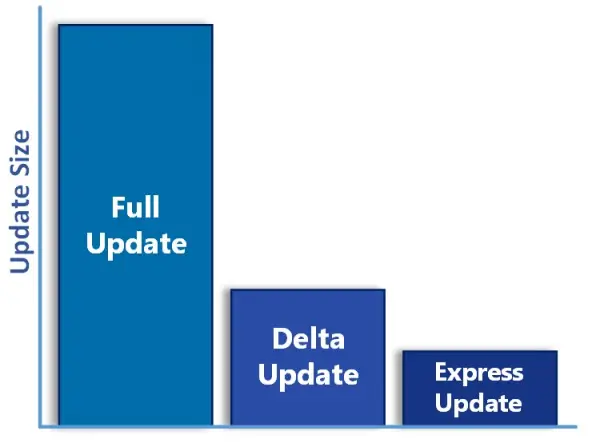Microsoft embarked on a new journey after it announced that Windows 10 would be offered as a service instead of a standalone operating system. Windows 10 has been receiving regular cumulative quality updates. This is designed to help make life easier for IT admins and end users so that they will stay up to date and the security will not be impacted. The downside of the cumulative update is that it hogs a lot of bandwidth and this is likely to adversely affect the organization’s bandwidth.

This is how it usually works, the first cumulative update that succeeds the feature update will generally be in the 100-200MB bracket. As the number of update increases the size of the update also increases. Generally speaking, the size of the update corresponds to the additional components and the features. This pushes the size to 1-1.2GB after 6-8 months of release. Microsoft has now decided to tackle this issue by segregating the updates into different types. In this way, the burden on the network should ideally be reduced.
Full Updates
As the name suggests Full Updates comes packed with all the components that have been changed since the last feature update. Microsoft is also referring to it as LCU or latest cumulative update. Needless to say, this is the most comprehensive version of the update and is likely to be sized at 1-1.2GB. In other words, this type of update will replace the current cumulative update cycle.
Express updates
Express update depends on the differential method for every component. What this means is that the update mechanism takes into account all the recent updates and adds new components incrementally. The Express update will use a network protocol to determine optimal differentials and then download components that are necessary. The best part is that the Express Updates will be 150MB-200MB in size each month.
Delta updates
Personally speaking, I feel the Delta Update is a more of a pragmatic approach. The Delta update will only install if the device has the previous months update. Delta update will include the full component that has changed and naturally they are larger than the express updates at 300-500MB.
Thankfully Microsoft has taken care that all the updates will focus on installing the security improvements and the components that promise to improve the quality.
The need for Delta Update
It is only natural for us to confuse between the Express Updates and the Delta Updates. I must agree that both sound similar at first glance, but we realize the difference only once we dive deep. The sole purpose of Delta Update was to fill the void created by an express update. Until recently, the Delta Update was only available for devices that connected directly to Windows Update or Windows Server Update Services. Starting from 2017 the same was also extended to all 3rd party update management systems. Starting from February 12, 2019, Microsoft will stop creating Delta Updates for all version of Windows 10. This is good in a way as all the Windows 10 users will be able to use the Express Update protocol and save on precious network bandwidth.
Leave a Reply